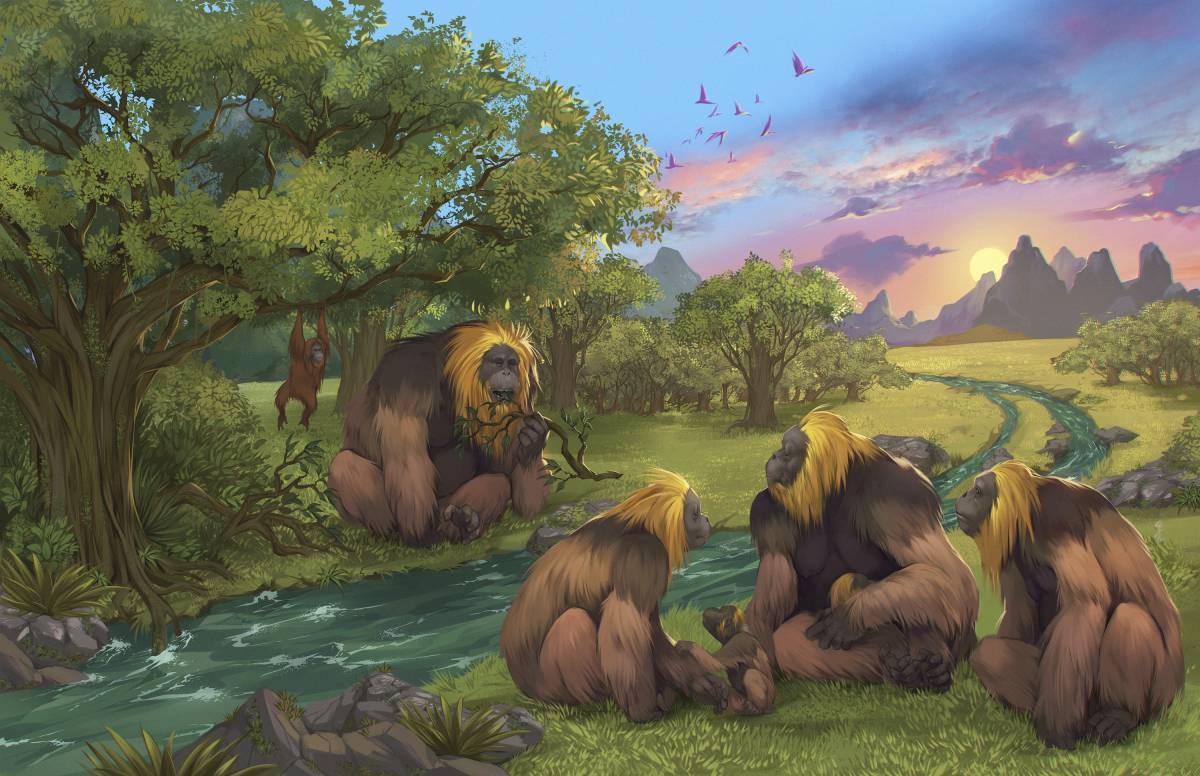WASHINGTON, D.C.: An ancient species of great ape, Gigantopithecus blacki, may have met its demise hundreds of thousands of years ago due to climate change. According to a recent study published in the journal Nature, the species, which once roamed the forests of southern China, stood at an impressive 10 feet tall and weighed up to 650 pounds. However, their massive size proved to be a disadvantage when their preferred fruits became inaccessible during dry seasons.
Lead researcher Renaud Joannes-Boyau, from Australia’s Southern Cross University, explains, “It’s just a massive animal — just really, really big. When food starts to be scarce, it’s so big it can’t climb trees to explore new food sources.” This lack of adaptability played a significant role in the species’ decline.
Gigantopithecus blacki, which bore a resemblance to modern orangutans, thrived for approximately 2 million years in the forested plains of China’s Guangxi region. They sustained themselves on a vegetarian diet, feasting on fruits and flowers in the lush tropical forests. However, as the environment underwent changes, their survival became increasingly challenging.
The researchers conducted an analysis of pollen and sediment samples preserved in Guangxi’s caves, as well as fossil teeth, to gain insights into the decline of the giant apes. They discovered that around 600,000 years ago, as the region experienced more dry seasons, the forests produced fewer fruits. This change in the availability of their preferred food source had a significant impact on the species.
Although the extinction of Gigantopithecus blacki was not immediate, the researchers estimated that it occurred between 215,000 and 295,000 years ago. The study revealed that while smaller apes could adapt by climbing trees to search for alternative food, the giant apes resorted to consuming tree bark, reeds, and other non-nutritious food sources.
“When the forest changed, there was not enough food preferred by the species,” explained co-author Zhang Yingqi of China’s Institute of Vertebrate Paleontology and Paleoanthropology. The lack of their favored food ultimately led to their demise.
Our understanding of the extinct great apes, including Gigantopithecus blacki, primarily comes from the analysis of fossil teeth and four large lower jaw bones found in southern China. Unfortunately, no complete skeletons have been discovered, leaving gaps in our knowledge of these ancient creatures.
Fossil records indicate that between approximately 2 million and 22 million years ago, numerous species of great apes inhabited Africa, Europe, and Asia. However, today, only gorillas, chimpanzees, bonobos, orangutans, and humans remain. While the emergence of the first humans is traced back to Africa, scientists are still uncertain about the continent where the great ape family first originated.
Rick Potts, Director of the Human Origins Program at the Smithsonian’s National Museum of Natural History, commented on the study, stating that the research sheds light on the impact of environmental changes on ancient species. Understanding the factors that contributed to the extinction of Gigantopithecus blacki can help us comprehend the complexities of our own changing world.
The story of Gigantopithecus blacki serves as a cautionary tale, reminding us of the delicate balance between species and their environment. Climate change and the resulting scarcity of resources have the potential to reshape ecosystems and impact the survival of even the largest and most formidable creatures. As we navigate the challenges of the modern world, it is crucial to learn from the past and strive for sustainable practices that protect the diverse array of species that call our planet home.







